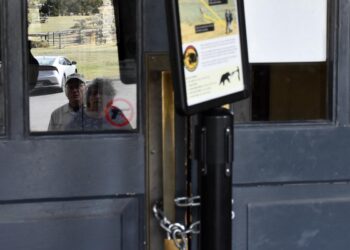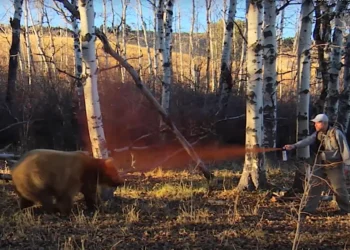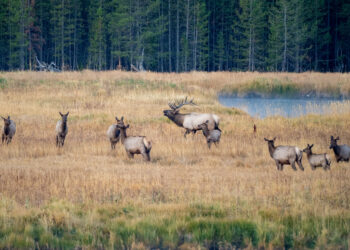Biologist shares insight on population counts
By Jessianne Castle EBS ENVIRONMENTAL & OUTDOORS EDITOR
LIVINGSTON – Standing before a cart lined with wolf skulls in the Yellowstone National Park Heritage and Research Center in Gardiner, park biologist Doug Smith weighed in on the oft-controversial topic of wolves. His words were a part of a recent video broadcast published on Yellowstone’s Facebook page and included him pointing out information gathered from the skull specimens, which are on display at the research center.
During the April 17 broadcast, Smith discussed wolf research and management, noting that the latest count, from December 2018, indicates there are roughly 80 wolves in Yellowstone. This is a drop from a peak of 174 back in 2003, and is a slight decline from the approximate average of 83 to 108 wolves over the last decade, as reported by the National Park Service.
Following the broadcast, news outlets such as the Powell Tribune and the Associated Press characterized this as a significant decline, and incorrectly quoted Smith as saying the survival rate of gray wolf pups is only about 7 percent.
In a May 15 phone interview with EBS, Smith said the drop to 80 wolves “is not a significant decline.”
“A population is never perfectly stable,” he added. Smith is one of the lead biologists for the Yellowstone Wolf Project, which is operated by a team of scientists who have documented and researched wolves since the first reintroduction in 1995.
Smith said there are two main factors impacting the lower number of wolves. First, he said a pack of about 10 wolves has historically lived along the southern boundary of Yellowstone. Last year, however, the wolves were spending roughly 70 percent of their time across the boundary in Wyoming so park biologists did not include them in the tally; Wyoming counted them instead.
“[The pack] still exists,” he said. “It’s an accounting issue … If we had counted that pack, our numbers would have been at 90.”
Smith pointed to another reason for the slight decline: the last couple years haven’t produced large pup crops either. “That’s just a natural phenomenon. It could be population saturation,” he said. During the April broadcast, he described this as an equilibration between wolves and their prey; based on food, the park can only support so many wolves,
While Smith doesn’t know the exact reason for a lower pup crop, he said the main impacts to pup survival are summer food source and disease. Currently, he said, the park is experiencing the aftermath of a distemper outbreak.
Canine distemper is a highly contagious disease found in many wild carnivores. Infecting the respiratory, gastrointestinal and nervous systems, distemper can be deadly to animals that don’t have immunity, though those that live through an outbreak are likely to survive a second exposure.
Biologists believe four distinct outbreaks of distemper have swept through the Yellowstone wolves since reintroduction, occurring in 1999, 2005, 2008 and 2017, likely spread by smaller carnivores like skunks and raccoons.
In a good year, Smith said pup survival is about 70 percent, meaning that about 70 percent of puppies born in the spring will make it to the fall. During a year of distemper outbreak, however, he said that number could drop to 20-30 percent.
This year, Smith and his team suspect that the wolves have 10-11 dens, meaning that a potential 10-11 litters were born in April and will begin exploring their pack’s range this summer.
“Pup production looks like it’s going to be up,” Smith said over the phone, though he added that biologists won’t get a solid count on pup numbers until fall. “Right now, with a lot of wolves in dens, I think we’re going to be in the 90-100 range by the end of the year.”














